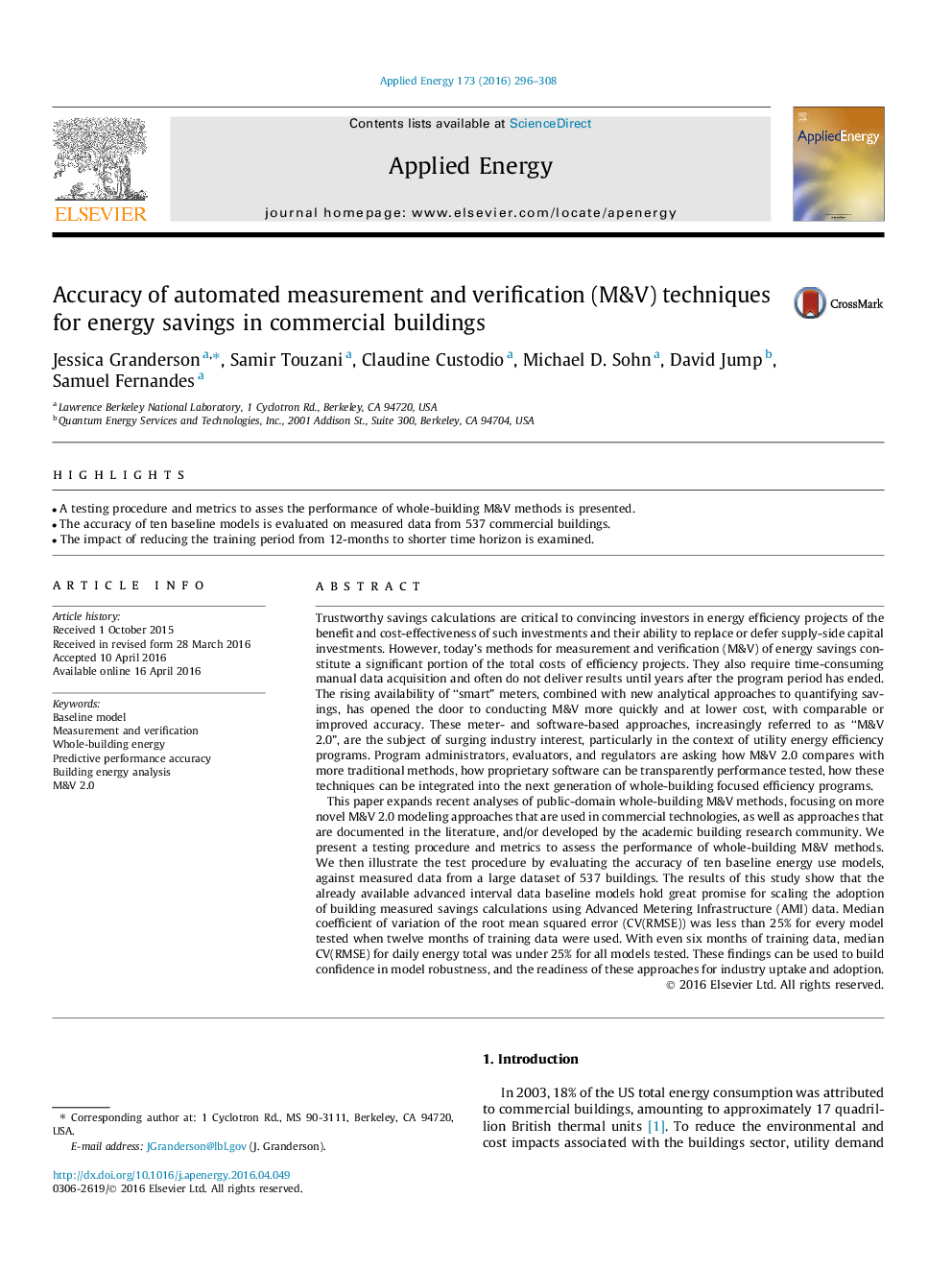| Article ID | Journal | Published Year | Pages | File Type |
|---|---|---|---|---|
| 6683144 | Applied Energy | 2016 | 13 Pages |
Abstract
This paper expands recent analyses of public-domain whole-building M&V methods, focusing on more novel M&V 2.0 modeling approaches that are used in commercial technologies, as well as approaches that are documented in the literature, and/or developed by the academic building research community. We present a testing procedure and metrics to assess the performance of whole-building M&V methods. We then illustrate the test procedure by evaluating the accuracy of ten baseline energy use models, against measured data from a large dataset of 537 buildings. The results of this study show that the already available advanced interval data baseline models hold great promise for scaling the adoption of building measured savings calculations using Advanced Metering Infrastructure (AMI) data. Median coefficient of variation of the root mean squared error (CV(RMSE)) was less than 25% for every model tested when twelve months of training data were used. With even six months of training data, median CV(RMSE) for daily energy total was under 25% for all models tested. These findings can be used to build confidence in model robustness, and the readiness of these approaches for industry uptake and adoption.
Related Topics
Physical Sciences and Engineering
Energy
Energy Engineering and Power Technology
Authors
Jessica Granderson, Samir Touzani, Claudine Custodio, Michael D. Sohn, David Jump, Samuel Fernandes,
